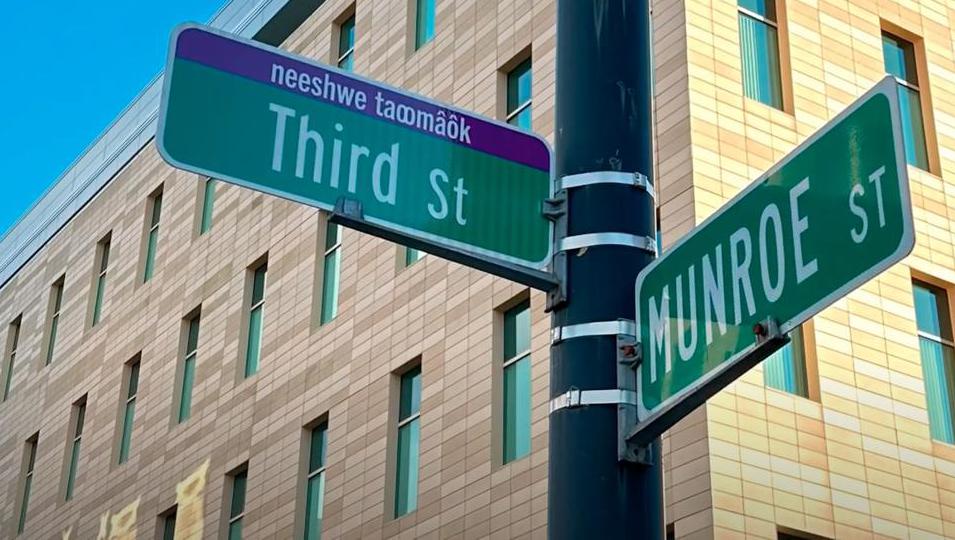A number of street signs in Cambridge have been redone to include translations to the language of the Massachusett Tribe as part of an initiative to honor the area’s Indigenous history.
The new signs, some of which were recently unveiled, are located in East Cambridge and run from First to Eighth streets. Some of the signs have not yet been installed, but by the end the project will include nearly 100 signs posted at about 80 intersections in the neighborhood, according to Cambridge city spokesman Jeremy Warnick.
At an event celebrating the new signage last week, Cambridge resident Sage Carbone, 34, who proposed the idea as part of the city’s 2021 participatory budgeting cycle, said the project has helped build “strong relationships between tribal nations, municipal leaders, and engaged citizens.’’
“When people see these signs, I hope that they’re prompted to learn more about the lands they are visiting or call home,’’ said Carbone, who is a member of the Northern Narragansett Indian Tribe of Rhode Island with Nipmuc, Massachusett ancestry. “I hope that they are encouraged to question, celebrate, and become changemakers in their own communities.’’
Cambridge Vice Mayor Marc McGovern said the addition of the Massachusett language represents “far more than a visual change.’’
“It is a profound acknowledgement of the people who lived here long before white settlement,’’ he said, according to video of the event. “The Massachusett Tribe has a rich history of tending to this land, fostering thriving communities, and preserving cultural traditions that continue to this day.’’
The unveiling celebration was attended by about 50 people, including representatives of the Massachusett Tribe at Ponkapoag, the Muhheconneuk Intertribal Committee on Deer Island, and the Northern Narragansett Tribe of Rhode Island, Warnick said.
The project was combined with a plan to upgrade the 20 markers along Cambridge’s African American Heritage Trail as part of the city’s African American and Indigenous Peoples Historical Reckoning Project, which received $180,000 in funding after voters approved the initiative during the 2021 budgeting process.
The city has set up a website with information about the project, as well as a guide to help residents and visitors pronounce the Massachusett translations.
The new signs show the English version of the street names in the typical white type over a green background. Above that in smaller letters is the Massachusett translation over a purple background, which represents the color of the quahog clam shell that is used by Native people to make wampum beads, according to the city.
In an interview last week, Carbone said she hopes other Cantabrigians request translated signs be added to the streets in their neighborhoods. She said the goal of the project is to “indigenize’’ more spaces in the city as a way to honor and respect Native culture and history.
“It brings together the ideas of land-back, of intertribal communication, and of working with municipalities in order to uplift Indigenous voices and make the diverse populations of the people that live in Cambridge more visible,’’ she said.
The updated signage comes after the City Council officially acknowledged the “Massachusett Tribal Nation as the original inhabitants of Cambridge,’’ according to the Harvard Crimson. The City Council also pledged to create a memorial for the tribe and hang a plaque at city hall, the student newspaper reported.
“I think this has laid a really great framework and provided some connections to the city to ensure that when these big cultural celebrations happen in the future, that not only do they have allies from the Indigenous residents of Cambridge but also non-Indigenous residents,’’ Carbone said.
Nick Stoico can be reached at nick.stoico@globe.com.

